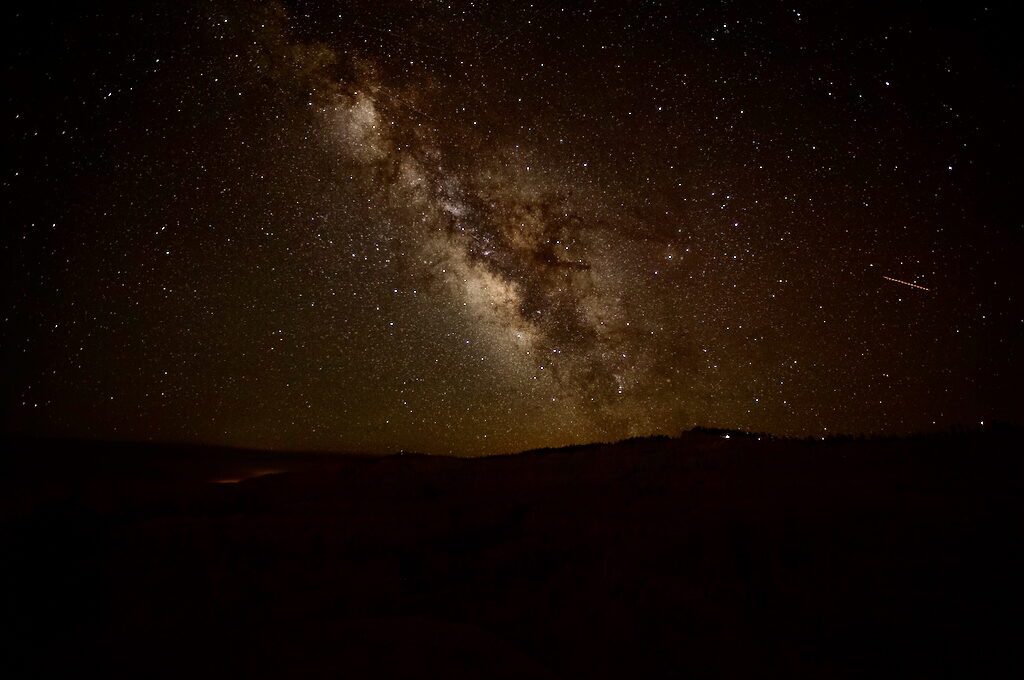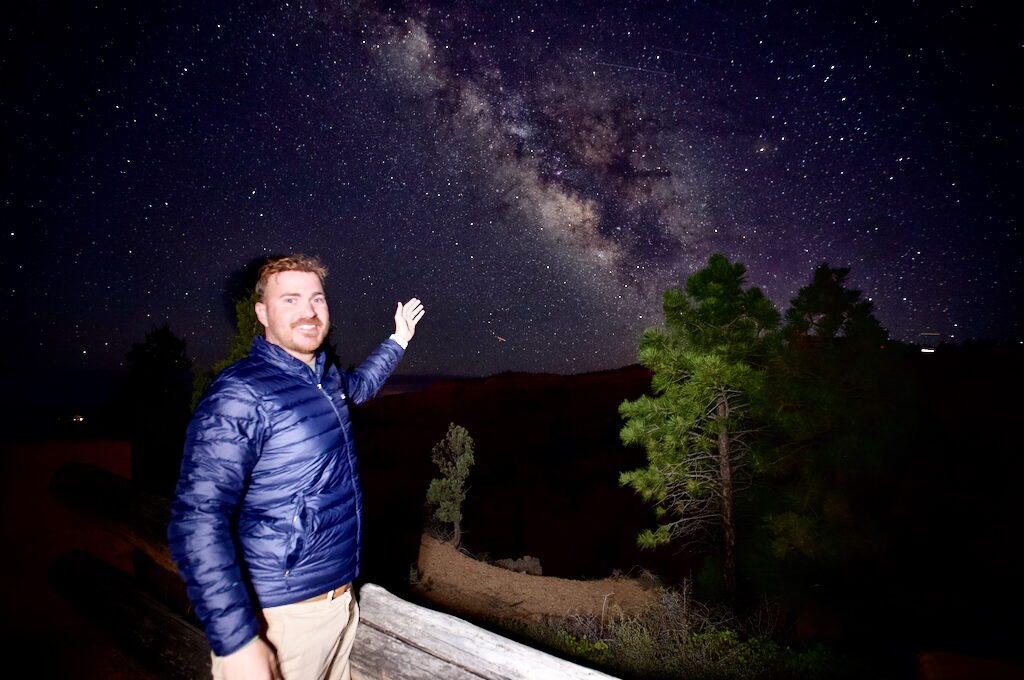If you’ve ever dreamed of stepping into a sky so dark and clear that the Milky Way stretches from horizon to horizon, Bryce Canyon National Park should be at the top of your list. We recently got to experience a truly spectacular night under one of the darkest skies in the country, and it blew us away. Whether you’re a seasoned stargazer or just curious about what makes this place so special, I’m here to share what we learned and how you can plan your own unforgettable night beneath Bryce’s stars.
A Bortle Class 2 sky + high elevation
First, it’s worth noting that Bryce Canyon, located in southern Utah, is in a Bortle Class 2 zone—meaning it’s really dark.
If you’re used to city or suburban skies, you’ve probably never experienced anything like this. Even in most rural areas, you’re usually looking at best a Bortle 3 sky. So coming out here is a whole different level. It’s dark enough for the Milky Way to show up in incredible detail, and the stars just blanket the sky from one horizon to the other. It’s honestly a mind-blowing experience..
Part of what makes Bryce Canyon’s night sky so remarkable is its high elevation—between 8,000 and 9,000 feet above sea level. This thinner atmosphere means less haze and atmospheric distortion, giving you clearer, sharper views of stars and celestial features.
Because of these exceptional conditions and the park’s strong efforts to minimize light pollution, Bryce Canyon earned the prestigious designation as an International Dark Sky Park—one of only a few protected places worldwide dedicated to preserving pristine night skies.

How to experience the night sky at Bryce Canyon National Park
There are a few different ways to experience the night sky here.
If you’re planning ahead, Bryce hosts an annual Astronomy Festival, which draws expert astronomers, telescope demos, and tons of stargazing activities. We were about a month late for that but we did visit on a summer weekend, which lined up with one of the park’s ranger-led astronomy nights.
At first, I was pretty interested in checking it out—but when we pulled into the parking lot, there were tons of people. I saw lots of crowds standing around, and even more cars still coming in. I’m sure it was a cool experience (especially for those new to astronomy), but I wasn’t quite feeling it.
While I’ve done a few star parties before, I’ve never done one with that many people.
It’s possible they kept things under control and manageable, but when you get that many people together, it’s almost inevitable that you have people flashing you with their lights, phones, or just being loud, etc. And I like to sit for long periods of time observing whatever is in the field of view and really settle into the image. So this type of crowded event is not exactly the ideal viewing experience for someone like me who values solitude when under the night sky.
So Brad and I ended up choosing a quieter, more personal experience instead.

We headed over to Sunset Point and wandered along the rim, checking out different viewpoints. There were a few people wandering around and stargazing but for the most part, it was a pretty quiet experience.
You do get the occasional stray light from a car in the nearby parking lot, but it’s not too disruptive—and if it bothers you, you can always walk a bit farther to get away from it. For the most part, we were able to just relax and take it all in.
Just remember to bring a red flashlight to help you get around so you’re not tripping over the path!

There are some benches along the rim, so I set up my tripod and camera and just waited. After about 20 minutes, my eyes were adjusted. At 10:26 pm, astronomical twilight ended—which meant we entered true darkness and had the darkest skies we were going to get.
The conditions were perfect. We had clear skies, even though there were some fires in the region—the smoke just didn’t make its way over. There weren’t any clouds, and there was no moonlight to compete with. Just a deep, dark sky—and it was absolutely brilliant.

As soon as I started taking photos, I realized just how much the Milky Way was going to stand out—it really popped out here. It was a lot of fun playing around with different foregrounds and just soaking in the night sky among the beautiful pine trees and the vast canyon.

One thing to think about is that it can get a little chilly, and the breeze coming off the canyon can be pretty noticeable, so if you’re heading out at night, I’d definitely recommend bringing a jacket and pants—maybe even a beanie and gloves if you get cold easily. For us, it was a little brisk but still totally comfortable. And overall, I absolutely loved the experience.
Experiencing Bryce Canyon’s night sky was one of those moments that sticks with you—a perfect mix of natural beauty, peaceful solitude, and pure wonder. Whether you join a ranger-led event, catch the annual Astronomy Festival, or simply find your own quiet spot along the rim, the stars here won’t disappoint. So pack your jacket, bring a red flashlight, and get ready for a night that just might change how you see the universe. Trust me, it’s worth every minute.
Daniel Gillaspia is the Founder of UponArriving.com and the credit card app, WalletFlo. He is a former attorney turned travel expert covering destinations along with TSA, airline, and hotel policies. Since 2014, his content has been featured in publications such as National Geographic, Smithsonian Magazine, and CNBC. Read my bio.

